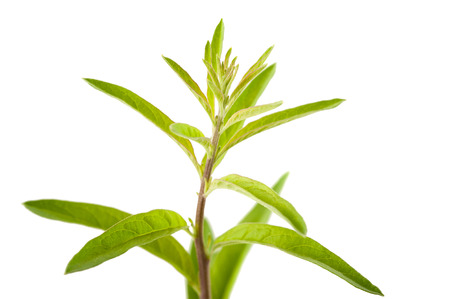Wendita calysina - Burrito

Common Names: Wendita calysina, Burrito, Burro, Wenatina calycina, Tea burrito, Té burrito, Lemon burrito, Burro de burrito
Latin Name: Wendita calycina
Origin: South America
Short Introduction
There are no precise guidelines for cultivating Wendita calysina in the existing local literature; instead, references are often made to its similarities with Lemon Verbena, which are noticeable during cultivation. Wendita can be propagated in several ways, the most popular being the planting of one-year-old cuttings, 10–15 cm long, with at least three nodes and no leaves. Cuttings are best planted about 10 cm apart at the start of spring to avoid winter disrupting the root development process. Commercially, growers can cultivate between 10,000 and 15,000 trees per hectare. With proper care, Wendita plantations remain productive for many years.
Wendita thrives in full sun. Frequent shade encourages the formation of larger leaves with lower levels of beneficial compounds. Excess wind can also be detrimental. However, the plant is resilient to rapid changes in soil and does not mind fluctuations in moisture.
Detailed Description
A South American herb with remarkable antioxidant properties.
Botanical Information
Wendita, botanically similar to Lemon Verbena, is sometimes confused with it, although such confusion is not dangerous. Wendita grows as a shrub or small tree, ranging from 50 cm to several meters in height. Its stem is square, smooth or slightly hairy. The leaves are aromatic, smooth, evergreen or sometimes deciduous during dry seasons, positioned oppositely (occasionally alternately) on the branches. Leaf edges are serrated and toothed. The flowers are small, white, and borne on short stalks.
Origin and Distribution
Wendita is native to the northeastern part of Patagonia and modern-day Paraguay. It is primarily consumed in South America, though its popularity is steadily growing in Western cultures, including North America, Europe, and Australia.
Usage / Dosage
Wendita is known for its excellent taste and aroma. It is enjoyed on its own as tea or as part of blends, prepared as a decoction, or used as a dietary supplement for refreshing relief during Argentina’s and Paraguay’s hot weather. Traditionally, Wendita is enjoyed before lunch along with mate or tereré drinks to ease extreme heat and as an aperitif to stimulate appetite.
It is also sipped to support digestion after heavy meals, much like how it is consumed after lunch for refreshment and to stimulate digestion. Locals often drink Wendita to relieve constipation, heartburn, stomach pain, and liver discomfort. The verbascosides extracted from its leaves are manufactured on an industrial scale for use in dietary supplements, cosmetics, and phytomedicinal products.
The phenolic compounds in Wendita calysina leaves demonstrate antioxidant activity. The phenolic content with antioxidant properties has been isolated using HPLC and evaluated alongside green tea, black tea, mate, and rooibos. The polyphenols present in Wendita, as well as in mate, espinheira-santa, and rooibos, are believed to have significant health-supporting properties. The health benefits associated with these teas are thus linked to their phenolic compounds and substantial antioxidant potential.
Water extracts from Wendita leaves have been tested in in vitro macrophage cell models stimulated with lipopolysaccharide and in in vivo animal models of acute inflammation (carrageenan-induced pleurisy). In the first model, there was inhibition of NO synthase expression and macrophage activity; in the second, several proinflammatory factors were reduced. These results collectively affirm the anti-inflammatory effects of Wendita calysina’s leaf constituents.
Other in vivo studies exploring its potential therapeutic effects highlight antidepressant, anxiolytic, and notably antispasmodic and anticonvulsant activities. Many scientific works have reported positive repellent and insecticidal effects of the compounds in its leaves, shown to repel harmful insects and even harm various developmental stages of arthropods at high concentrations.
Traditional Medicine Uses
Paraguayan folk medicine typically recommends "burrito" as an anti-inflammatory and antirheumatic remedy. The herb is said to harmonize the meridians of the intestines, liver, gallbladder, and stomach. According to traditional medicine, it positively influences the bladder, aids digestion, and strengthens the body against stress, psychological tension, and assorted illnesses. It is also believed to protect against premature aging and degeneration of the joint system. Various herbal guides and textbooks of traditional medicine recommend Wendita for intestinal complaints, vomiting, and loss of appetite.
Active Compounds
Phytochemical analysis of Wendita, using mass spectrometry and nuclear magnetic resonance, has led to the identification of several groups of compounds including two flavanonols (dihydroquercetagenin, pentahydroxyflavanonol), well-known flavonoids, methoxyflavones, methoxyflavanonols, phenylethanoid and phenylpropanoid glycosides (verbascosides), as well as derivatives of benzoic acid.
Traditional Dosage
Pour 750 ml of hot water over one tablespoon of dried herb and steep under a lid for 10–15 minutes. Sip the prepared tea throughout the day. After three weeks of daily use, take a one-week break. The dried leaves also make an excellent flavoring addition to other herbal tea blends.
